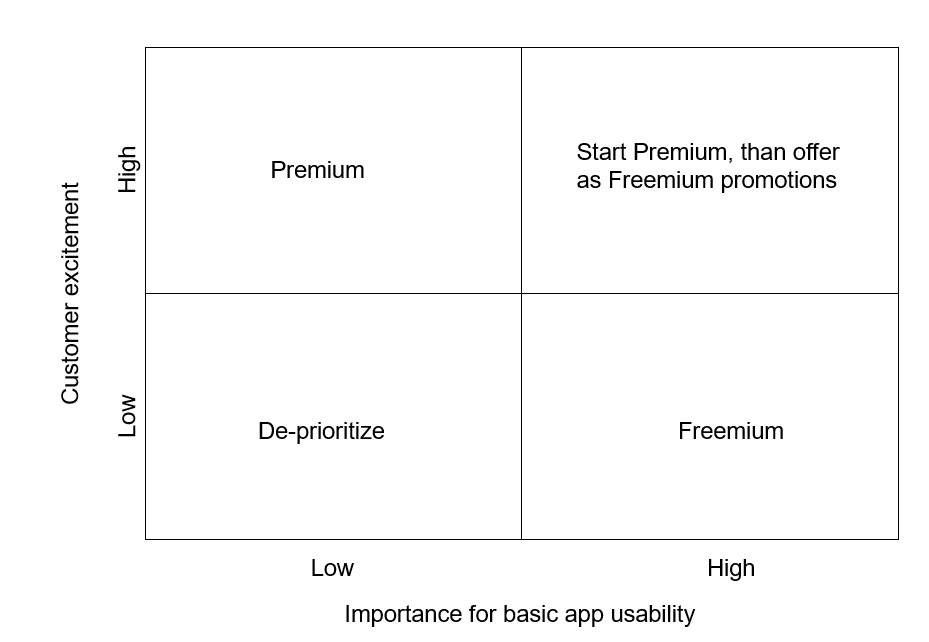Well, your framework here needs to be how you evaluate each feature.
So,
Value of product as "Free" offering
vs
Value of product as "Premium"
For each, you need to measure:
- Quantity of consumers i.e. likelihood of bringing in customers
- Value of customers i.e. how much they're paying
- Stickiness of customers i.e. likelihood of preventing them from leaving
So, free has the benefit of bringing in new customers (which you have to value at a certain rate), which have a x % probability of buying premium products, BUT may free-ride
Premium has the benefit of earning more money per customer BUT preventing certain users from entering the platform.
Free = Drives Quantity
Premium drivers basket size per customer
You want to maximize this equation/combination






